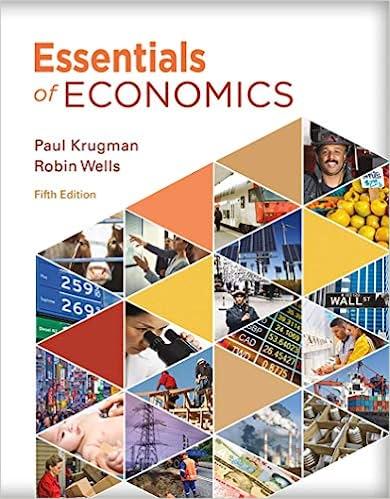In early 2016 the Wall Street Journal reported that a number of big financial players, including the
Question:
In early 2016 the Wall Street Journal reported that a number of big financial players, including the legendary speculator George Soros, had taken an interest in the future performance of the Chinese economy. Although China had achieved spectacular economic growth over the past 25 years, much of the smart money (cash invested or wagered by those considered to be experts) in the global financial system thought that boom times in China were over and that an economic crisis was looming. They believed that a weak Chinese economy would be especially devastating because Chinese companies had borrowed heavily during the boom times. Some even warned of political instability as tens of millions of Chinese citizens found their new-found prosperity slipping away.
That same year, global financial speculators placed their money in assets that would do well if the Chinese economy took a plunge.
What was the basis of this pessimism? And why did it merit betting hundreds of millions of dollars on it? Although official Chinese statistics did indicate some slowing of growth, they also showed a relatively robust growth rate of 6.9% in 2015 and forecast similar growth for 2016. Yet, this is what the smart money in global markets knew: nobody believed China’s official numbers.
In fact, many in China knew this as well. In an unguarded moment, a rising Chinese official named Li Keqiang (shown in the accompanying photo) told the U.S. ambassador that China’s official GDP figures were “man-made.” That is, he effectively admitted they were concocted by Chinese officials to fit the optimistic story about the state of the economy that the government was communicating to its citizens. Li Keqiang also explained that in trying to understand the state of the Chinese economy he used three indicators that were easy to track and that weren’t part of the Chinese national account: railway shipments, electricity consumption, and loans disbursed by banks. The revelation of this conversation made a splash around the world because it confirmed what many observers believed. Mr. Li knew what he was talking about. He soon went on to become China’s Prime Minister, and if he didn’t believe his own government’s numbers, why should anyone else?
For businesses with interests in China, it is standard operating procedure to turn to independent estimates of Chinese GDP growth produced by a variety of researchers at places like Citibank, the British consulting firm Lombard Street Research, and the Conference Board, a research-oriented business association. Many of these estimates make use of some variation of the “Li Keqiang index”; that is, they rely on the data Li Keqiang uses, as well as other indicators like data on trade with neighboring countries like South Korea that have a reputation for clean statistics. For example, a fall in Chinese imports of components used in the production of goods from South Korea—which is also a fall in South Korea’s exports to China—is a good indication of a slump in Chinese manufacturing.
So how much did these independent estimates differ from the official statistics? They generally suggested a much sharper slowdown than was indicated by the numbers coming from the Chinese government. Was this discrepancy enough to justify big bets against China? At the time of writing, it’s too early to know.
Questions:-
1. Why would an economic downturn cause problems for Chinese companies that borrowed heavily?
2. How do the three statistics that Li Keqiang cited fit into the three different ways to calculate GDP?
3. What business problems might China’s untrustworthy numbers create?
Step by Step Answer:






